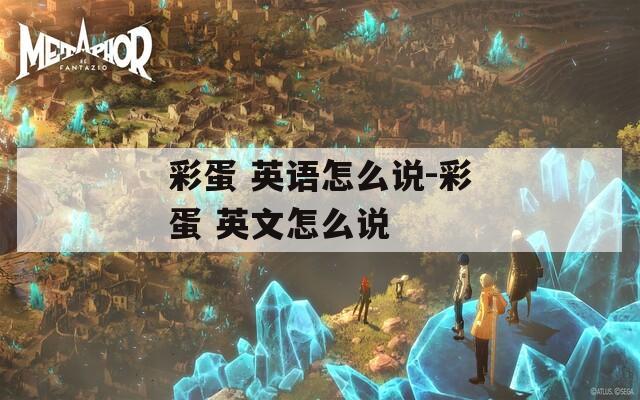In today's digital landscape, the term*"Easter egg"** has transcended its traditional connotation associated with the Easter holiday.Easter eggs_ are hidden features, messages, or inside jokes embedded within various media forms, such as video games, films, software applications, and websites. Understanding the concept of Easter eggs requires a deeper dive into its origins, usage, significance, and variations across different platforms. In this article, we will explore the multifaceted world of Easter eggs, shedding light on their definitions, various manifestations, and their role in enhancing user experiences.
Origins and Evolution of Easter Eggs
The term*Easter egg** has intriguing origins that merit exploration. Initially, it referred to the practice of hiding eggs during the Easter celebrations, representing rejuvenation and new beginnings. In the digital realm, this concept was repurposed to signify hidden surprises in programming and media. One of the earliest documented occurrences of a digital Easter egg dates back to 1980 with the Atari game*Adventure**. This game featured a hidden room that credited the game's creator, which was revolutionary in a time when developers often went unrecognized. Over the years, as technology advanced, the usage of Easter eggs proliferated across various platforms, adapting to the culture of sharing and discovery in the digital age. Furthermore, Easter eggs have come to symbolize a playful spirit among creators, adding an interactive dimension to user experiences.
Types of Easter Eggs
Easter eggs manifest in various forms across different media. Here are some of the most prevalent types:
- Software Easter Eggs: Hidden features or messages coded into software applications, often discovered through unusual sequences of actions.
- Video Game Easter Eggs: Secret levels, character references, or hidden items that gamers can discover, often rewarding exploration and creativity.
- Film and Television Easter Eggs: Subtle nods or cameo appearances that reference other films, series, or pop culture phenomena.
- Website Easter Eggs: Interactive surprises embedded in webpages, which might include hidden animations, secret links, or playful functionalities.
- Book Easter Eggs: Subtle references or hidden messages within texts that engage readers in a deeper interpretation of the content.
- Advertising Easter Eggs: Clever hints or insider references hidden in commercials or campaigns, often creating a buzz among audiences.

Significance of Easter Eggs
The significance of Easter eggs extends beyond mere entertainment. Firstly, they create an element of surprise and excitement, enriching the user experience. Secondly, they encourage exploration and creativity, prompting users to engage more deeply with the content. Additionally, Easter eggs can serve as a medium for creators to communicate directly with their audience, share personal anecdotes, or pay homage to influences that shaped their work. Furthermore, they build a sense of community among users who hunt for these hidden features and share their discoveries. This interactivity fosters a deeper connection between creators and consumers, based on shared experiences and collective knowledge. Finally, the playful nature of Easter eggs can enhance brand loyalty, as users appreciate the extra effort invested in creating an engaging experience.
Famous Examples of Easter Eggs
Several iconic Easter eggs have left a lasting impression in the realm of popular culture. One memorable example is the*"Hidden Mickeys"** in*Disney** parks and films, where the silhouette of Mickey Mouse is subtly incorporated into various elements. Another notable instance is the inclusion of*references to the game "Doom"** in later game releases across the industry, showcasing the game's legacy. In the film world,*Pixar films** are known for their Easter eggs, such as the recurring character,*A113**, which often indicates a nod to a classroom at the California Institute of the Arts. Similarly, the*Marvel Cinematic Universe** is famous for its post-credit scenes and interconnections between films, serving as a treasure trove of Easter eggs for devoted fans. Finally, the renowned text adventure game,*"Zork,"** contains several amusing Easter eggs that add a layer of humor and surprise for inquisitive players.
How to Find Easter Eggs
Hunting for Easter eggs can be an exhilarating adventure for fans and users. To embark on your quest, consider the following strategies:
- Research: Explore forums, fan websites, and social media to discover documented Easter eggs from other users.
- Experiment: Engage with the content interactively, trying out unconventional actions or sequences to trigger hidden features.
- Collaborate: Join communities or groups dedicated to Easter egg hunting, sharing insights and tips with fellow enthusiasts.
- Stay Curious: Approach content with an investigative mindset, being open to the possibility that there might be more than meets the eye.
- Pay Attention to Details: Observe subtle changes in graphics or dialogues that could provide clues to hidden features.
- Follow Developers or Creators: Engaging with creators on social media may offer hints or explanations regarding hidden surprises in their work.
In conclusion, the world of*Easter eggs** is a fascinating blend of art, technology, and community engagement. As we uncover hidden gems in various media, we embrace the spirit of creativity and playful exploration. Understanding the concept of Easter eggs not only enriches our interactions with content but also deepens our appreciation for the creators who craft these meaningful experiences.
References
1.*Cohen, Steven.** “The History of Easter Eggs in Video Games.”Game Studies*, vol. 14, no. 2, 2014. 2.*Disney, Walt.** “Exploring Hidden Mickeys.”Disney Parks Blog*, 2022. 3.*Hernandez, Patricia.** “The Psychology of Easter Eggs.”Polygon*, 2019. 4.*López, Marco.** “Easter Eggs in Film: A Cultural Phenomenon.”Cinema Journal*, vol. 59, no. 1, 2020. 5.*O’Donnell, Keith.** “Hunting for Easter Eggs: A Passionate Pursuit.”Ultimate Gamer Magazine*, 2023.









